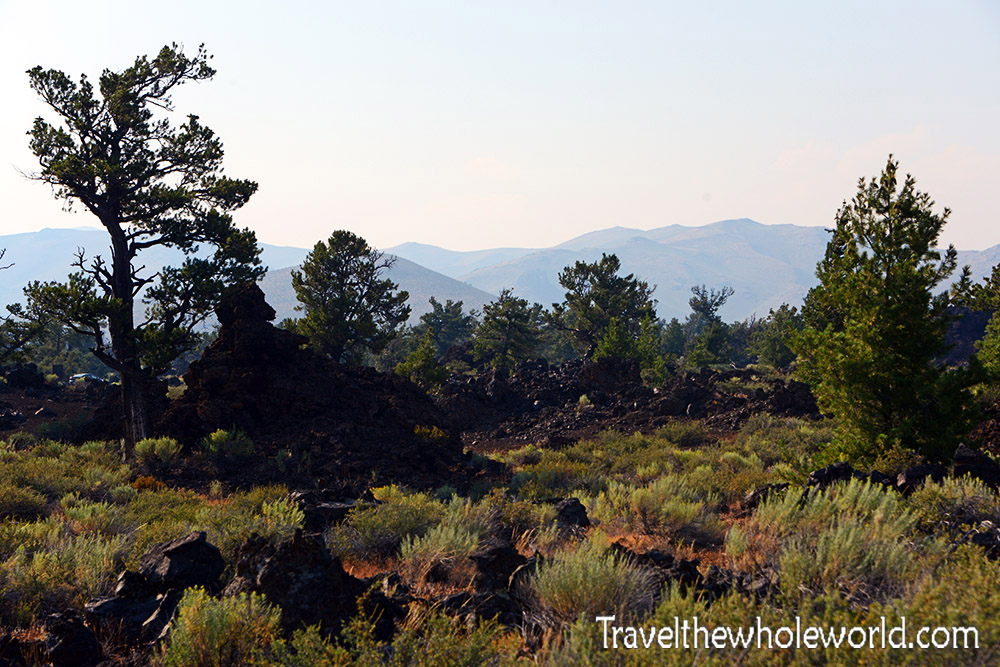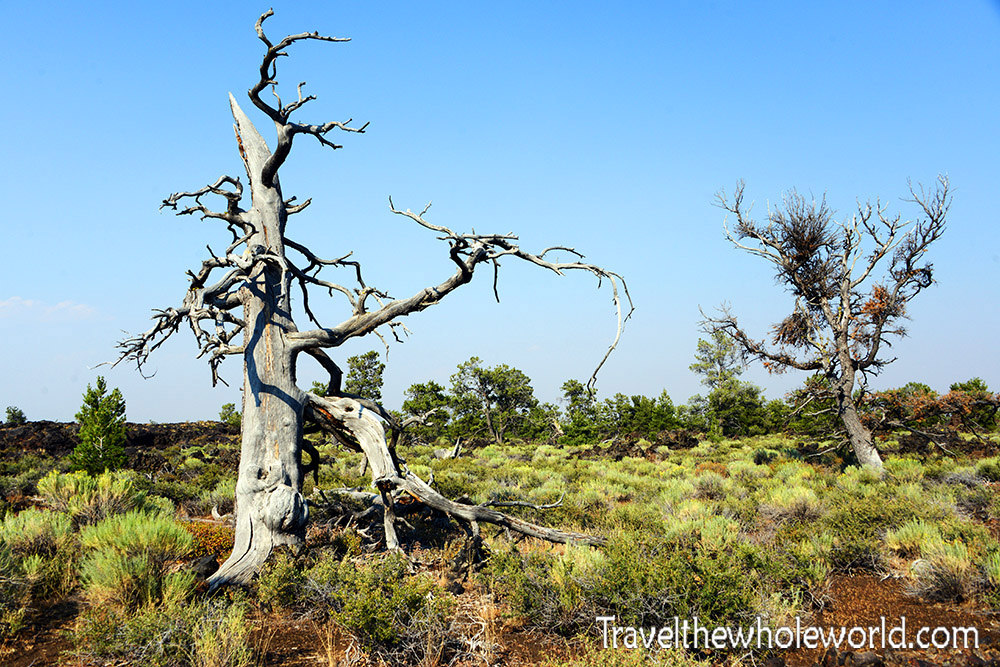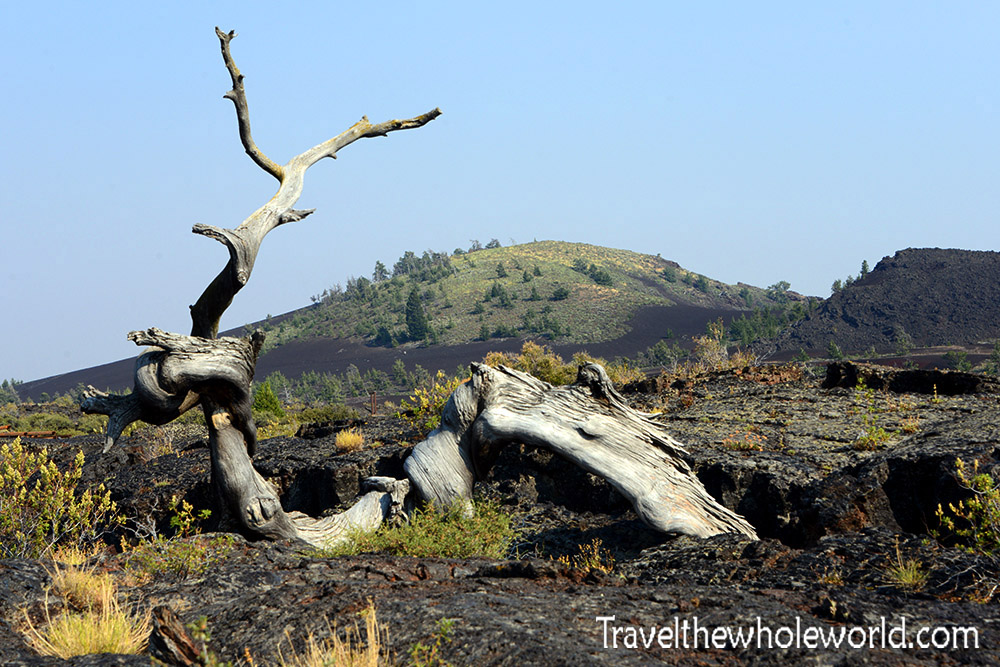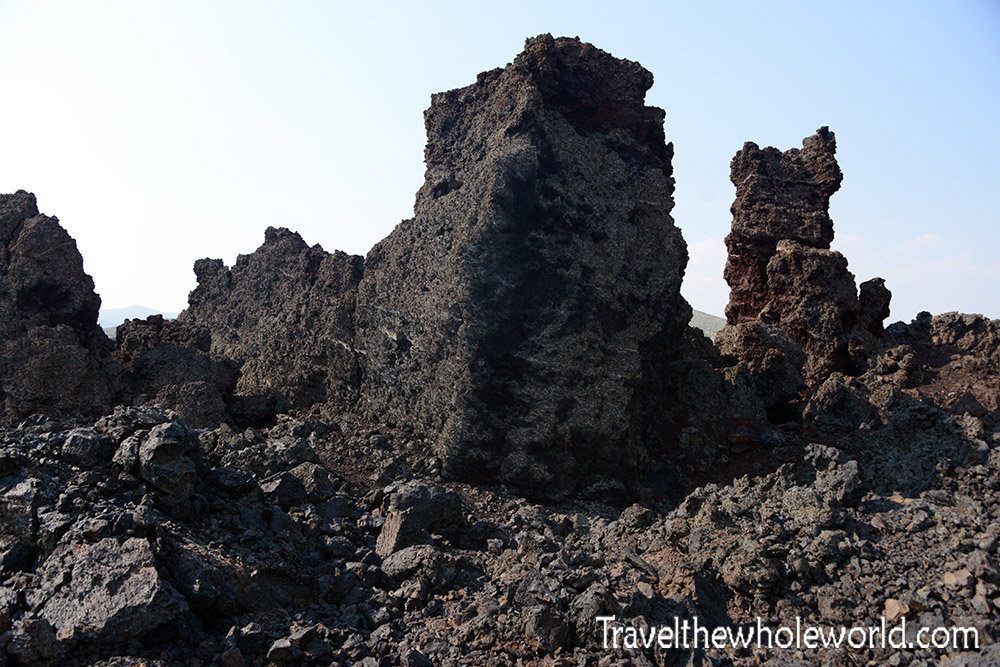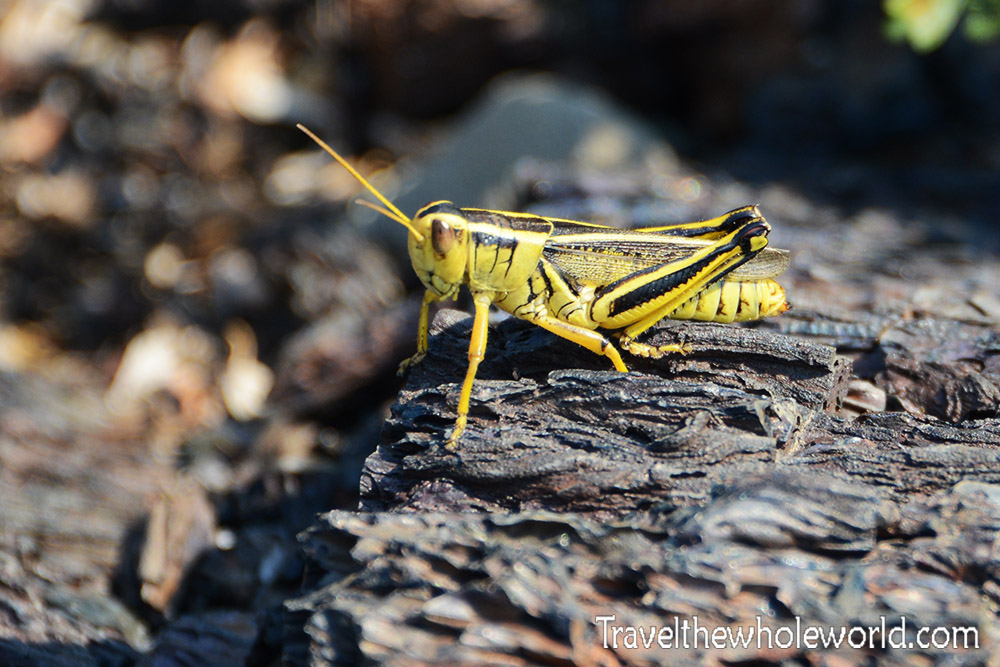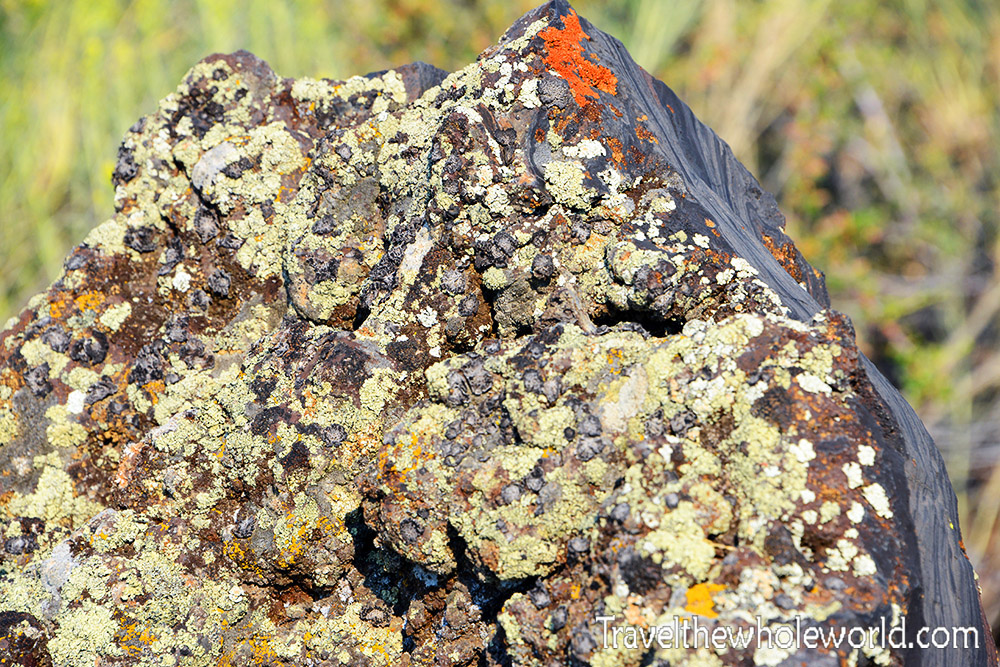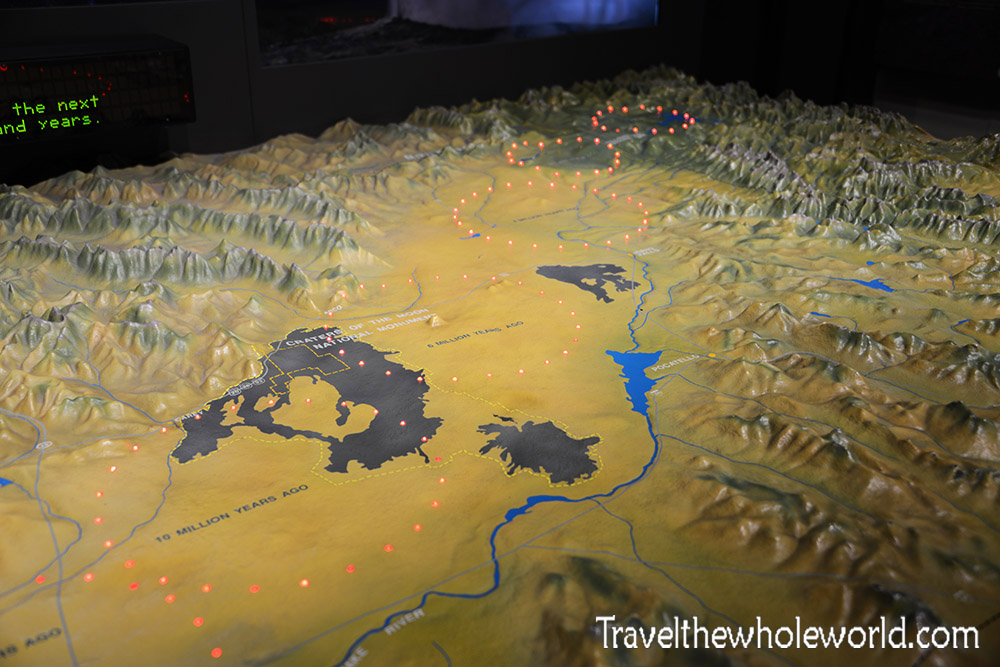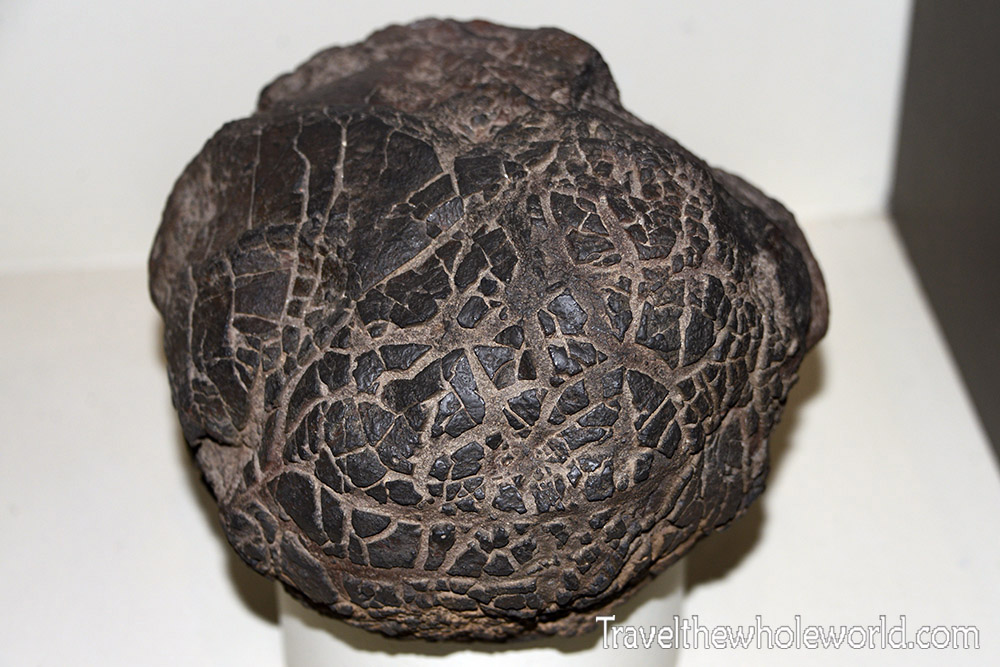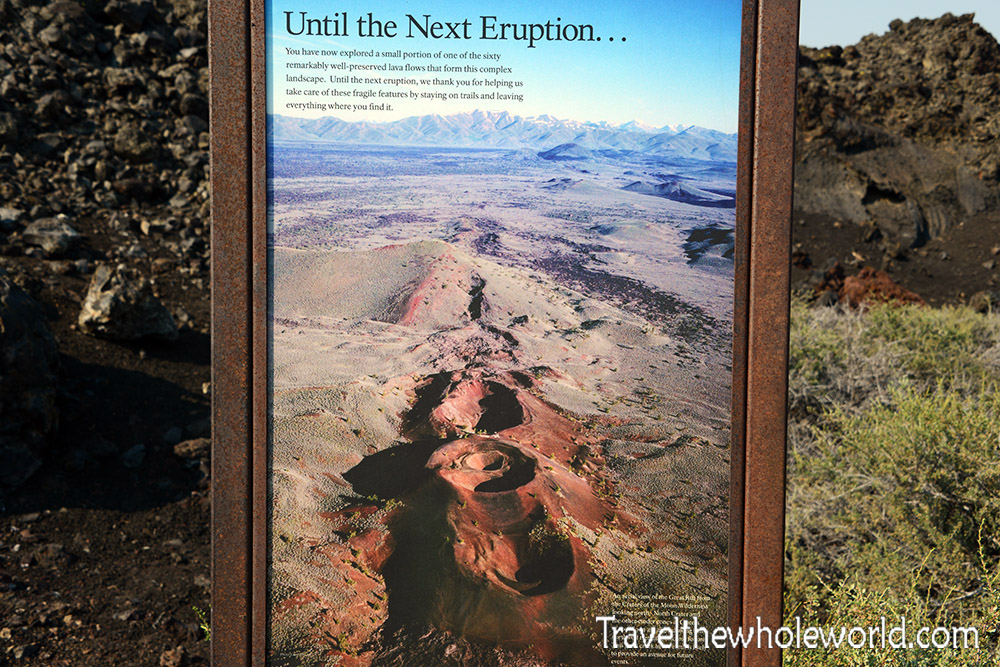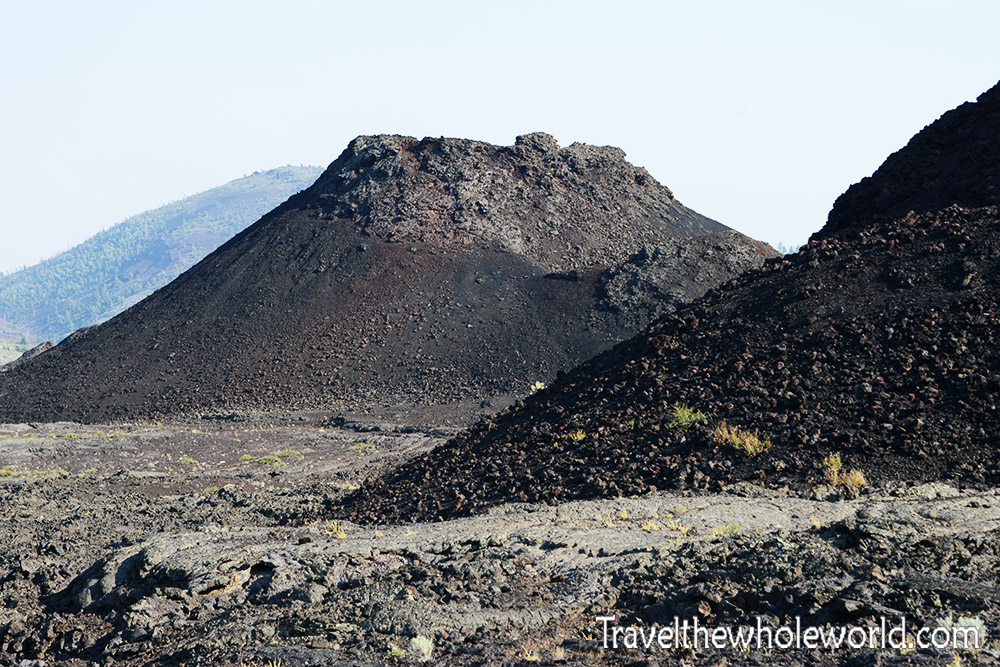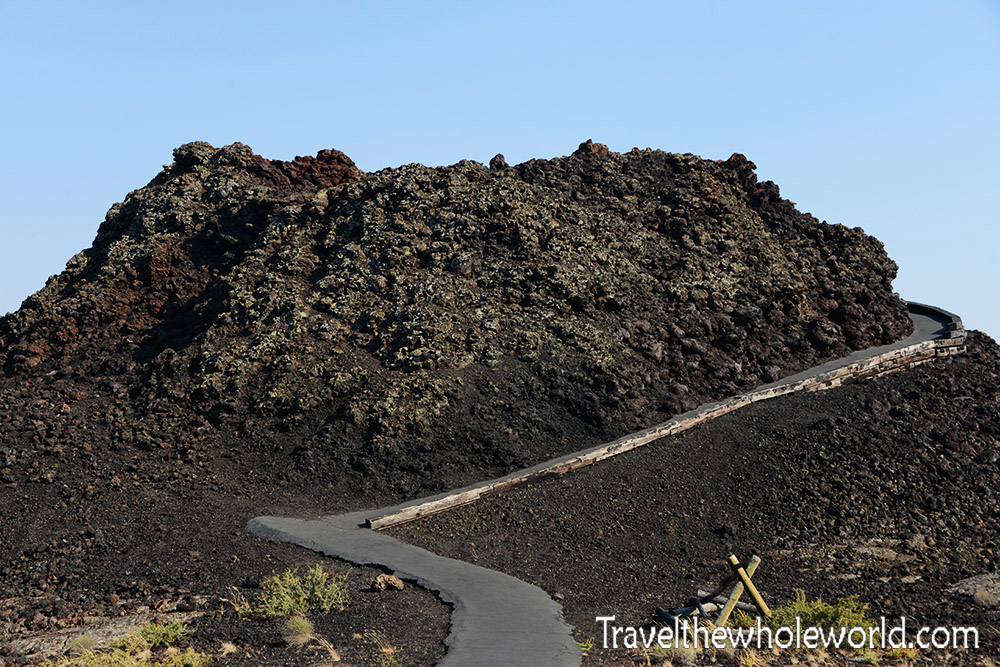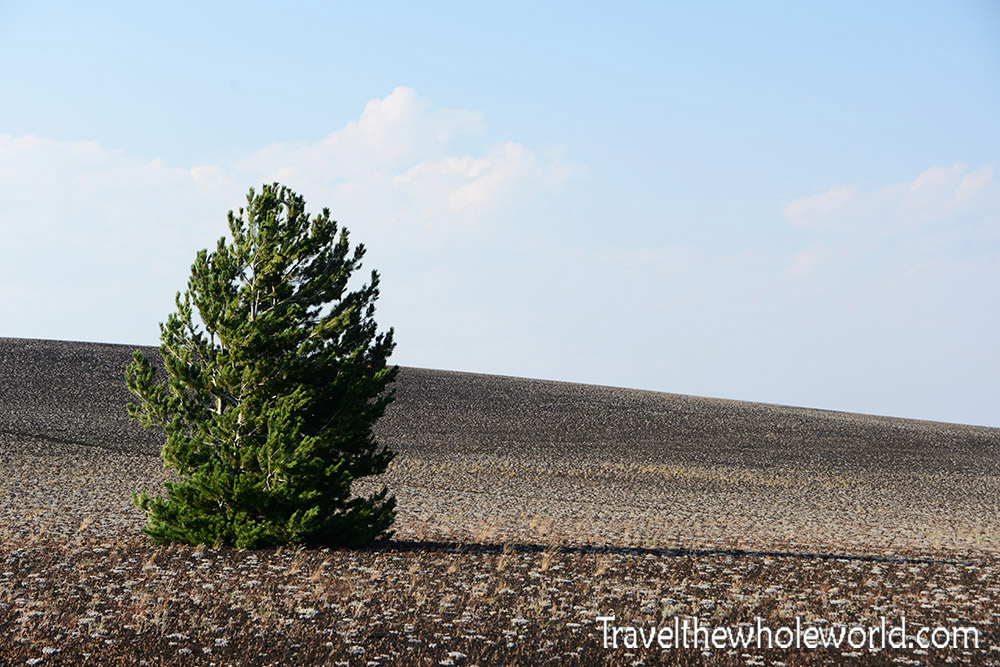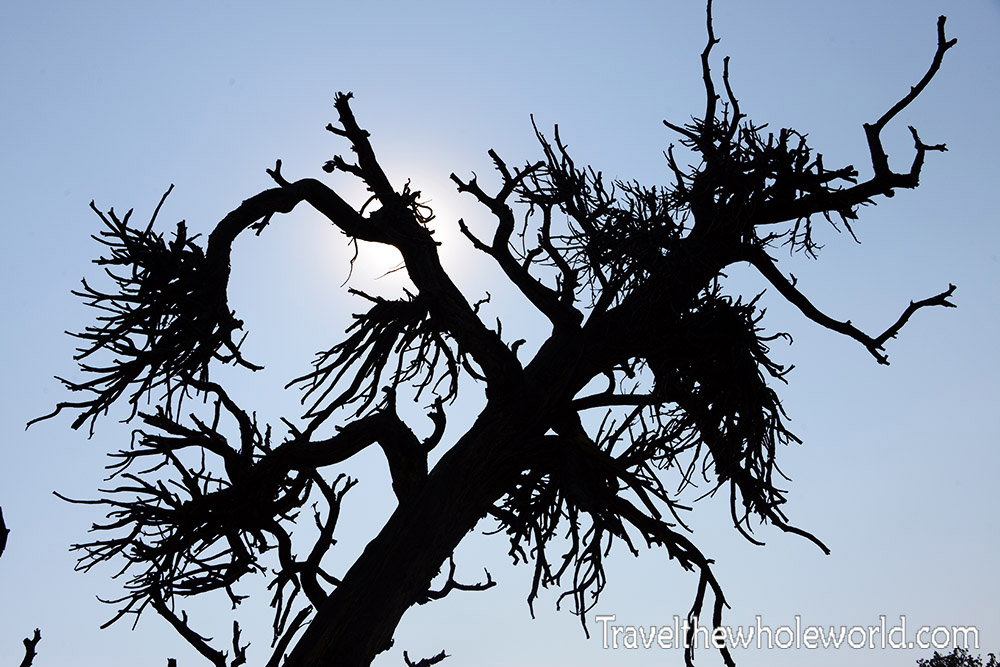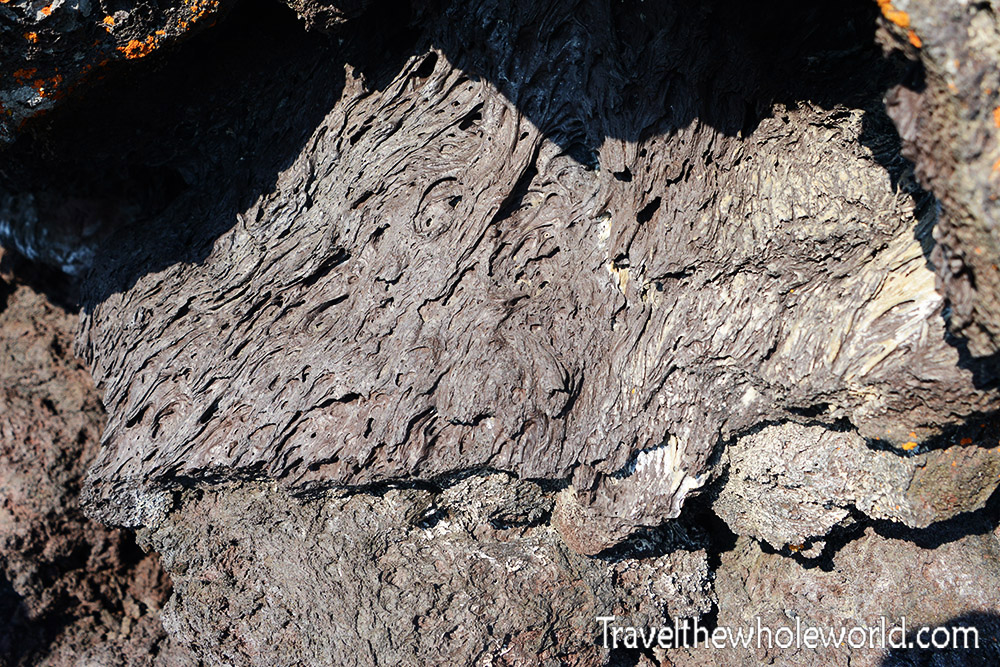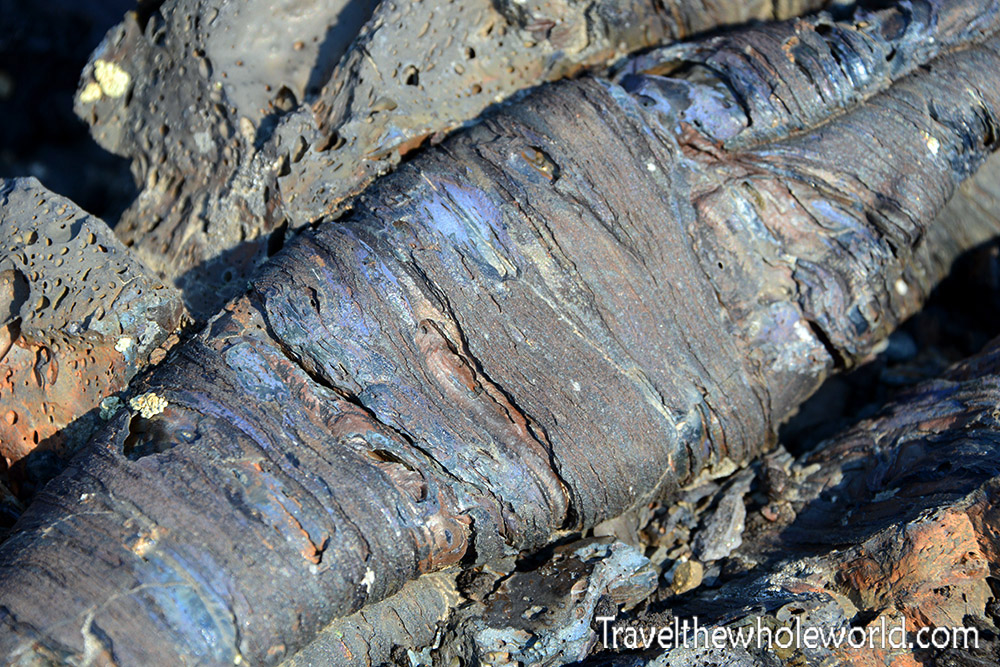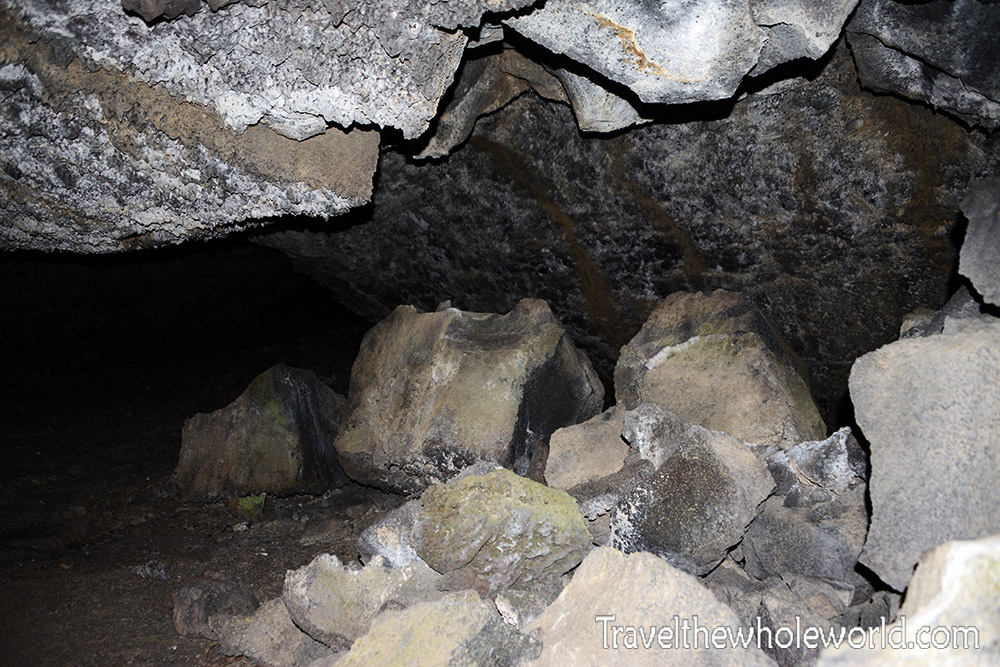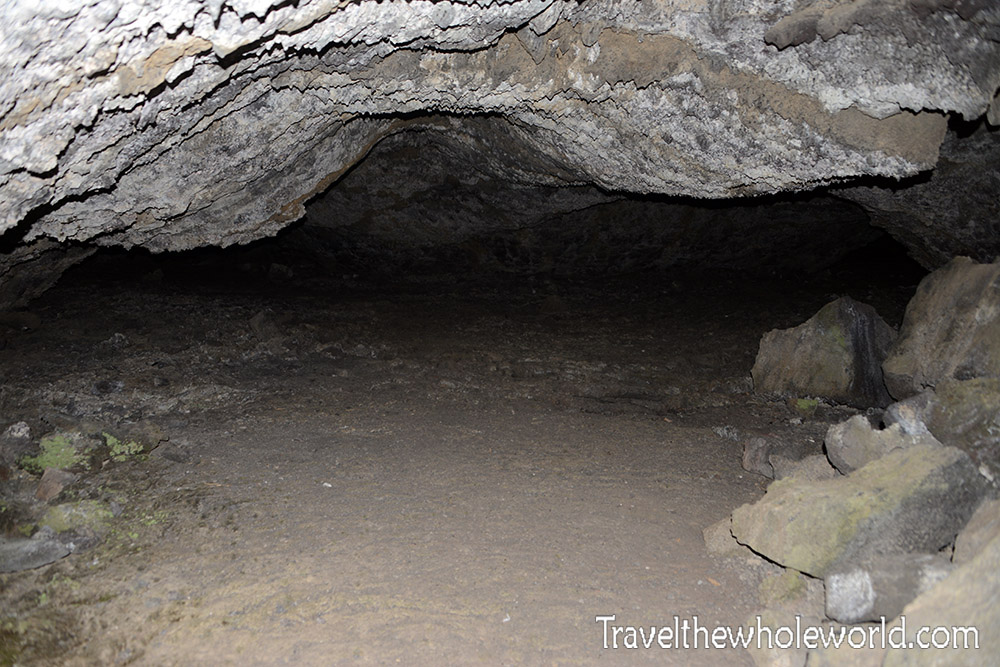Visiting Craters of the Moon
Craters of the Moon is definitely an unexpected gem in south central Idaho. The state seems to have a hard time trying to recover from its image of nothing but potato farms, but Craters of the Moon is just one example of Idaho’s geological diversity. From these two photos above and below, you can see some typical trees and shrubs you’d expect in the state, but can still tell something about the landscape is different.
On a closer look, you’ll see the entire terrain here is dark from aged lava flow. That’s right, Idaho used to have some serious volcanic activity!
One of the first walks I did was right by the entrance of the park. This is seriously like a five minute walk, by it will take you by some of the most impressive lava columns I saw here at Craters of the Moon.
On a longer walk I did, there were no lava columns but instead this place looked like nature was reclaiming the landscape. These bright grasshoppers were pretty popular along the trail, and so was this colorful lichen below.
I’ve heard about Craters of the Moon years ago when I briefly lived in Boise, but other than knowing its existence there wasn’t much I could tell you about the place. Its past is pretty interesting, and you can quickly find out its history from this interactive map in their visitor’s center. These red rings represent different time periods in past eons. Roughly ten million years ago, this area of Idaho was actually a hotbed for geysers and volcanoes. As the plates shifted and the landscape changed, this volcanic activity began to move eastward. If you can see that ring at the very top of the photo, that’s where the current activity is, in Yellowstone, Wyoming.
Also in the visitor center are some interesting pieces of lava on display. Of the three they had on display, I assume this one would probably be the most difficult to find. This example is called the breadcrust bomb, named after its looks and how it was formed. Basalt lava can be hurled up into the sky in large pieces which are called lava bombs. In this case, the lava on the outside cooled and hardened while the inside was still molten hot and expanding. The further expansion made the solid outside area crack and fracture and resemble a large piece of bread, hence the breadcrust bomb!
Since no drones are allowed, it’s hard to understand what the park really looks like from ground level. This post by a trail head had a good aerial photo that shows these craters look like from above. Although lots of volcanic eruptions took place here for millions of years, the eruptions that formed Craters of the Moon were only 15,000 years ago. They still could erupt again, but the last eruption in Craters of the Moon was about 2,100 years ago.
The best preserved volcanoes here are a small collection that appear to be in the middle of the park. At first I’d have been willing to bet these are the same volcanic craters from the aerial photo above. On a closer look though, they are shaped differently and there are no hiking trails from the aerial photo, unless that’s an extremely old picture!
One of the volcanoes has a short trail that goes up to the rim. These volcanic craters are seriously short, and the hike up takes only a couple minutes. From the crater rim, I found it difficult to get a good photo pointing down since I was so close. The best I could do was take a photo of the colorful volcanic wall across from me and post it below.
A few of the trails take you through some of the unique landscapes, such as this one above. This field was covered in lava with nothing but some small plants, and this one lone tree. Other areas of Craters of the Moon have more trees to them, but many of them have passed away. I assumed it was because of the difficulty in growing in the terrain, but a sign by this tree below mentioned the true cause. Two diseases called dwarf mistletoe and white pine blister have spread through the region, and wiped out a large number of trees here.
I think the most impressive sights in Craters of the Moon are the close up ones. I should have brought my macro lens here! Some of the lava here like the breadcrust bomb has some interesting formations and even colors. I named this lava above chocolate lava, since that what it resembled to me when I passed by on a trail. In the photo I think it looks more like an old piece of wood though!
My favorite sample that I found outside is photographed here. This type of lava is called Blue Dragon because of its blue and purple tint. Apparently the color is formed by tiny pieces of obsidian on the surface that create the color.
My next big surprise after discovering that Idaho has volcanic activity was that there are hundreds of caves here in Craters of the Moon. These caves were formed by lava tunnels, and are now home to eleven species of bats. A mistake I made here was not going to the visitor center to get a permit to explore the caves. While I was outside this cave, a couple came by who had signed the documents in the visitor center. They said the only were asked if they had ever been in a cave in the past ten years, and beyond that there wasn’t anything they were really told or asked. From the outside the cave I visited looked more like a collection of boulders than something you could actually enter. The photo above shows the entrance to one of the most popular caves here.
Since I didn’t have a permit, all I did was enter about five feet and take this photo. As you can see, the cave opens up a bit and there is a nice flat surface to follow. I’m not sure if you can go deep enough where you can actually see any bats resting. At the time of my visit there is a major fear of spreading a deadly disease that can kill up to 90% of bats in a colony. White Nose Fungus was so serious that when I visited Fort Delaware a few months ago we had to walk along a soap soaked rug to clean our shoes when leaving the site. Not taking the few minutes to get a permit was a mistake, next time!
